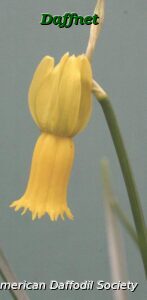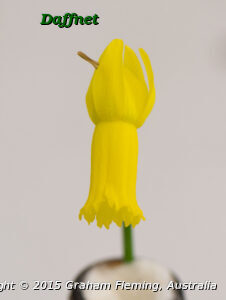Your message is ready to be sent with the following file or link
attachments:
N. cyclamineus – Galician Form
N. cyclamineus – lobed and toothed form.
Note: To protect against computer viruses, e-mail programs may prevent
sending or receiving certain types of file attachments. Check your e-mail
security settings to determine how attachments are handled.



So there is considerable variability in N. cyclymineus. Do these different types pass their characteristics on to their offspring?
And are there selections of N.cycl. with a good rate of vegetative increase?
Sent: 26 June 2020 20:57
Petra Vogt, Germany has commented on a post.
Click here to see the original comment: daffnet.org/2020/06/n-cyclamineus-galician-form-n-cyclamineus-lobed-and-toothed-form/#comment-19217
So there is considerable variability in N. cyclymineus. Do these different types pass their characteristics on to their offspring?And are there selections of N.cycl. with a good rate of vegetative increase? If you find one Petra – please share! I think that in the wild they mostly increase by seed though clumps are found – but that might be because a pod of seed released in the one spot. As with all species I think it is important to select attractive forms, or with desired characteristics for breeding purposes. eg. I prefer to use the flanged/toothed traditional forms rather than the Galician – I’d love to call it N. cyc. var galiciensis – but then what would we call the intermediate forms?
Brian
~~—~~Petra Vogt has commented on a post at daffnet.org
Click here to see the comment and the original post: daffnet.org/2020/06/n-cyclamineus-galician-form-n-cyclamineus-lobed-and-toothed-form/#comment-19217
This email was sent to you, at your request. If you wish to discontinue receiving these messages, please send an email request to: Unsubscribe <javascript:DeCryptX(‘2f0e0s2w1c2u1d1s0i0b0e0@1e0a3i1g2q0d2k1m3x3v0a1/2q3u1h’)>.
Hi
We have both forms and some intermediate forms but not the short forms. David Adams had a short form that we don’t have and I have never seen Petra’s form but we do have hybrids that are as small or smaller.
I have spoken and written about our experiences with N. cyclamineus and NTT that appear to be at odds with Northern Hemisphere growers experiences. Our N. cyclamineus and NTT divide and multiply. When they are old the bulbs are quite large and the flowers are quite large. They are not miniature as such but small intermediates. Some of our forms have furrows and they produce seedlings that have the same charactistic. I don’t like this characteristic. We have had our N cyclamineus for around 25-28 years now.
Thanks Graham.
All look very familiar to me.